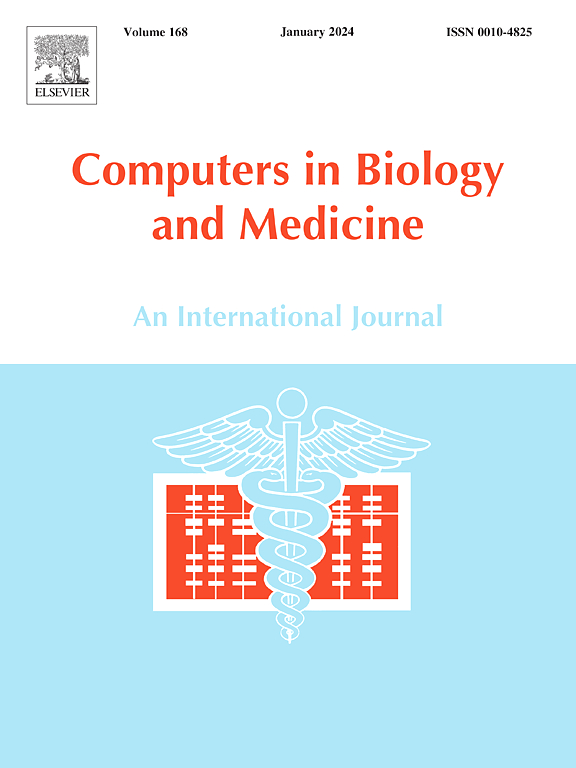动态握持过程中评估肌肉疲劳和恢复的表面肌电的匝幅和功率谱分析
IF 7
2区 医学
Q1 BIOLOGY
引用次数: 0
摘要
在运动中监测肌肉疲劳和恢复是很重要的。肌电信号频率结构的改变已被用来指示肌肉疲劳。匝幅分析(TAA)反映了肌肉动作电位的和消。它在动态肌肉收缩下识别疲劳和恢复的应用仍未得到检验。本研究探讨了动态肌肉收缩下的TAA和肌电功率谱分析识别疲劳和恢复的能力。TAA包括每秒匝数(T/s)和平均匝幅(MTA),功率谱分析包括中位数频率(MDF)作为参数。18名健康成人执行重复性握力任务,直到握力低于MVC的50%。在疲劳和恢复过程中连续采集表面肌电信号和握力数据。MDF、T/s和MTA在四个时间点计算:疲劳前、疲劳后、恢复早期和恢复后期。Pearson相关性用于检验表面肌电信号参数与疲劳水平之间的关联。研究发现,与疲劳前相比,疲劳后状态下的T/s和MDF显著降低。随着肌肉的恢复,T/s和MDF恢复到疲劳前的相似水平。此外,在疲劳任务中,MDF和T/s与疲劳水平呈负相关和中等相关。然而,在恢复任务中,只有T/s与疲劳水平相关。这些发现表明,T/s参数可以识别动态收缩过程中的肌肉疲劳,并为运动和康复科学提供最佳个体方案。本文章由计算机程序翻译,如有差异,请以英文原文为准。
Turns-amplitude and power spectral analyses of surface EMG for assessing muscle fatigue and recovery during dynamic hand gripping
Monitoring muscle fatigue and recovery is important during exercise. Alterations in the frequency structure of the myoelectric signals have been used to indicate muscle fatigue. The turns-amplitude analysis (TAA) reflects a muscle's summation and cancellation of action potentials. Its application in identifying fatigue and recovery under dynamic muscle contractions remains unexamined. This study investigated the ability of TAA and power spectral analysis of sEMG to identify fatigue and recovery under dynamic muscle contractions. TAA included the numbers of turns per second (T/s) and mean turn amplitude (MTA), while power spectral analysis included median frequency (MDF) as a parameter. Eighteen healthy adults performed a repetitive handgrip task until grip force failed below 50 % of MVC. The sEMG data and handgrip force were collected continuously during the fatigue and recovery. MDF, T/s, and MTA were calculated across four time points: pre-fatigue, post-fatigue, early-recovery, and late-recovery. Pearson correlations were used to examine associations between sEMG parameters and fatigue level. The study found that, compared with pre-fatigue, there was a significant decrease in the T/s and MDF during the post-fatigue state. As the muscle recovered, T/s and MDF returned to a similar level of the pre-fatigue states. Moreover, MDF and T/s showed a negative and moderate correlation with fatigue levels during the fatigue task. However, only T/s correlated with fatigue levels during the recovery task. These findings suggest that the T/s parameter could identify muscle fatigue during dynamic contraction and provide benefits in sports and rehabilitation science to establish optimal individual protocols.
求助全文
通过发布文献求助,成功后即可免费获取论文全文。
去求助
来源期刊

Computers in biology and medicine
工程技术-工程:生物医学
CiteScore
11.70
自引率
10.40%
发文量
1086
审稿时长
74 days
期刊介绍:
Computers in Biology and Medicine is an international forum for sharing groundbreaking advancements in the use of computers in bioscience and medicine. This journal serves as a medium for communicating essential research, instruction, ideas, and information regarding the rapidly evolving field of computer applications in these domains. By encouraging the exchange of knowledge, we aim to facilitate progress and innovation in the utilization of computers in biology and medicine.
 求助内容:
求助内容: 应助结果提醒方式:
应助结果提醒方式:


